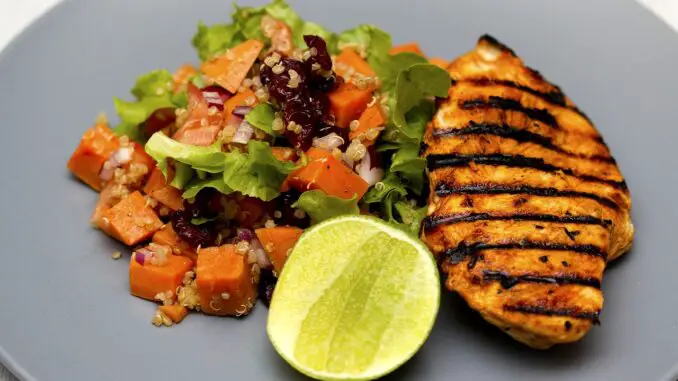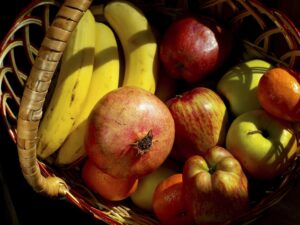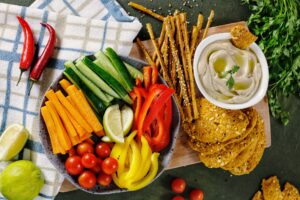
Low Fat Diet After Gallbladder Removal
Gallbladder removal can be a life-saving procedure, but it also carries some risks. After the surgery, your body needs time to recover and heal. One of the most important steps you can take is to watch what you eat. A low-fat diet after gallbladder removal can help your body regulate bile production and reduce symptoms such as diarrhea, bloating or cramping. In this blog post, we’ll look at why a low-fat diet is important for gallbladder removal patients, as well as tips on how to follow one.
Gallbladder Removal and Diet
After having your gallbladder removed, it is important to change your diet to a low-fat diet. This is because the gallbladder’s main function is to store bile, which helps the body break down and digest fat. Without a gallbladder, the body can’t store as much bile, so it’s important to limit the amount of fat you eat.
A low-fat diet doesn’t have to be boring. There are plenty of delicious foods that are low in fat, including lean protein sources, fruits and vegetables, whole grains, and healthy fats like olive oil and avocado. By filling your plate with these healthy foods, you’ll be getting the nutrients your body needs while also keeping your fat intake in check.
Of course, everyone’s dietary needs are different, so talk to your doctor or a registered dietitian before making any major changes to your diet. They can help you create a plan that fits your individual needs and make sure you’re getting all the nutrients you need for good health.
Low-fat diet after gallbladder removal
A low-fat diet is often recommended after gallbladder removal. This is because the gallbladder stores bile, which helps the body break down fat. Without a gallbladder, the body cannot store as much bile, so it is important to limit fat intake to prevent digestive problems.
There are a few things to keep in mind when following a low-fat diet after gallbladder removal. First, focus on eating lean protein sources and plenty of fruits and vegetables. Second, avoid high-fat foods, including fried foods, fatty meats, full-fat dairy products, and processed snacks. Third, use healthy fats sparingly, such as olive oil or avocados. By following these guidelines, you can help your body adjust to life without a gallbladder and enjoy good digestion.
Foods to eat and avoid on a low-fat diet
What is a low-fat diet?
A low-fat diet is one that contains limited amounts of fat and often emphasizes foods high in fiber. This type of diet is most often recommended after gallbladder removal.
Which foods should I eat on a low-fat diet?
There are many different types of food that you can eat on a low-fat diet. Some examples include:
- Fruits and vegetables: aim for at least five servings per day. Good choices include leafy greens, tomatoes, onions, garlic, carrots, berries, and apples.
- Whole grains: choose whole grain breads and cereals, brown rice, quinoa, and oats.
- Lean protein: select lean cuts of meat such as chicken or fish, tofu, legumes, and eggs.
- Low-fat dairy: opt for skim milk, yogurt without added sugar, and cottage cheese.
Which foods should I avoid on a low-fat diet?
There are also some foods that you should avoid or limit on a low-fat diet. These include:
- Fatty meats: fatty cuts of beef, pork, lamb, etc. should be avoided or limited.
- Full-fat dairy products: whole milk, cream cheese, ice cream, etc.
- Processed foods: these often contain unhealthy fats as well as added sugars and salt.
What to Eat on a Low-Fat Diet
A low-fat diet is an important part of recovering from gallbladder surgery. It helps to prevent problems such as diarrhea and constipation, and it also helps the incision heal.
There are a few things you need to keep in mind when following a low-fat diet. First, you need to make sure you’re getting enough protein. aim for at least 50 grams per day. You can get this from lean meats, poultry, fish, tofu, legumes, and eggs.
Second, you need to eat plenty of fruits and vegetables. These are packed with vitamins, minerals, and fiber that will help your body heal and function properly.
Finally, you need to limit your fat intake. Avoid fried foods, high-fat meats, full-fat dairy products, and butter or margarine. Instead, opt for healthy fats like olive oil and avocado. By following these tips, you’ll be on your way to a healthy recovery.
Foods to Avoid on a Low-Fat Diet
A low-fat diet is a necessary part of post-gallbladder removal care. To make sure you heal properly and don’t experience any complications, it’s important to follow a few simple rules. One of the most important things to remember is to avoid high-fat foods.
Your gallbladder stores bile, which helps you break down and digest fat. Without a gallbladder, your body can’t process fat as well. That means that if you eat high-fat foods, you’re more likely to experience digestive problems like diarrhea, indigestion, and gas.
To avoid these problems, stick to low-fat foods for at least the first few weeks after your surgery. After that, you can slowly start adding some higher-fat foods back into your diet. But be careful – too much fat too soon can still cause digestive problems.
So what counts as a high-fat food? Generally speaking, anything that has more than 3 grams of fat per serving is considered high fat. That includes things like:
- butter
- margarine
- oils and salad dressings
- mayonnaise
- cream cheese
- fried foods
- biscuits
- cakes
- pastries
- fatty meats
- full-fat dairy products
Low-Fat Diet Recipes
If you’re looking for low-fat diet recipes, look no further! This collection of recipes has something for everyone, whether you’re looking for breakfast, lunch, or dinner ideas. All of these recipes are low in fat and calories, and they’re also delicious. So if you’re looking to lose weight or improve your overall health, give these recipes a try.

Top Low Fat Diet Fruits
There are a variety of fruits that can be part of a low fat diet after gallbladder removal. Some of the best options include:
- Apples: One of the most popular fruits, apples are low in fat and calories and high in fiber. They’re also a good source of vitamins A and C.
- Bananas: Another great choice for a low fat diet, bananas are also low in calories and high in fiber and potassium.
- Citrus fruits: Oranges, grapefruits, lemons and limes are all excellent sources of vitamin C. They’re also low in calories and fat.
- Berries: Strawberries, blueberries, raspberries and blackberries are all excellent choices for a low fat diet. They’re packed with antioxidants and fiber, and they’re relatively low in calories.

Top Low Fat Diet Vegetables
If you are looking to follow a low fat diet after gallbladder removal, there are certain vegetables that you should include in your diet. These vegetables are low in fat and will help you to maintain a healthy weight. Some of the top low fat diet vegetables include:
- Cucumbers: Cucumbers are 95% water, making them a great choice for a low fat diet. They are also rich in vitamins and minerals, and can help to regulate blood sugar levels.
- Tomatoes: Tomatoes are another great option for a low fat diet. They are packed with nutrients like lycopene and Vitamin C, and can help to boost the immune system.
- Zucchini: Zucchini is another vegetable that is high in water content, making it perfect for a low fat diet. It is also rich in fiber, which can help to regulate digestion.
- Spinach: Spinach is a nutrient-rich vegetable that is low in calories and fat. It is an excellent source of vitamins and minerals, and can help to improve overall health.

Top Low Fat Diet Snacks
When it comes to low fat diet snacks, there are plenty of options to choose from. Here are some of the top choices:
- Veggies and Dip: Cut up some veggies like carrots, celery, and peppers and pair them with a low fat dip like hummus or yogurt based dip.
- Fruit: A simple piece of fruit is a great snack option and can be easily paired with nuts or seeds for a more complete snack.
- Trail Mix: Make your own trail mix with a combination of low fat nuts, seeds, dried fruit, and whole grain cereals.
- Whole Grain Crackers and Cheese: Choose whole grain crackers and top them with a small amount of low fat cheese for a satisfying snack.
- Yogurt: Plain yogurt makes a great snack on its own or you can add in some fresh fruit or granola for extra flavor and crunch.
Conclusion
A low-fat diet after gallbladder removal is important for a successful recovery. Check out these best supplements after gallbladder removal as well to aid you in a life without gallbladder transition.. This type of diet helps to prevent issues with digestion and can even help to reduce inflammation in the body. Eating foods that are high in fiber, such as fruits, vegetables, and whole grains can also be beneficial for overall health. With careful planning, it is possible to follow a healthy eating plan that keeps you feeling full and energized while providing your body with the nutrients it needs to heal post-surgery.


Great work! That is the kind of information that are meant to be shared across the web.
Shame on the seek engines for not positioning this post higher!
Come on over and talk over with my site . Thanks =)
Heya i am for the primary time here. I found this board and I to find It truly
useful & it helped me out much. I am hoping to present one
thing again and aid others like you helped me.
Heya! I just wanted to ask if you ever have any
trouble with hackers? My last blog (wordpress) was hacked and I ended up
losing months of hard work due to no back up.
Do you have any solutions to stop hackers?
It is actually a great and useful piece of information. I’m glad that you just shared this useful
info with us. Please stay us informed like this.
Thanks for sharing.
Hey There. I discovered your weblog using msn. That is a really well written article.
I’ll be sure to bookmark it and return to learn extra of your helpful information. Thank you for the post.
I will certainly return.
I’m truly enjoying the design and layout of your site. It’s a very
easy on the eyes which makes it much more enjoyable
for me to come here and visit more often. Did you hire out a developer to create your theme?
Fantastic work!
Hello, all the time i used to check weblog posts here early in the dawn, because i like to learn more and more.
Good day very nice blog!! Guy .. Beautiful .. Amazing .. I will bookmark your site and take the feeds additionally?
I am happy to find numerous useful info right here in the post, we want develop extra techniques in this regard, thank you for sharing.
. . . . .